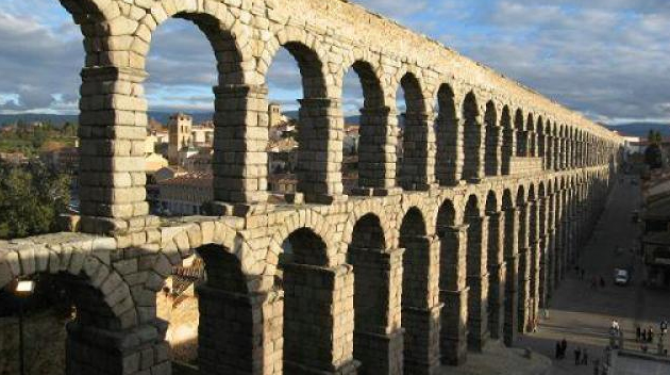The 10 Roman aqueducts to admire

Aqueducts were one of the most used systems in ancient Rome for water consumption in the villages. Today there are many aqueducts that continue to persist in our country, since they are large buildings that have gone down in history as admired monuments. Today I tell you what are the 10 best you ever have to see.
In the first place we find a Spanish aqueduct, that of Segovia. Within Spain, it is the most important, in addition to being the largest. It is one of the best preserved and are an essential part of the decoration of the city.
The aqueduct of les Ferreres, in Tarragona, occupies the second position of this list. This aqueduct was created in the 1st century BC and was used until the 18th century.
In Mérida we find the Aqueduct of Los Milagros. In this case it is preserved worse than the previous ones, but much of its architecture can still be seen.
In Aragon is the Roman aqueduct of Los Bañales, of which only 32 pillars are preserved, so that it has nothing to do with the previous ones where we can see practically all the architecture.
If we move to Rome we find the famous Alexandrina aqueduct. The dimensions of this is smaller than the previous ones, but a large part is preserved.
In sixth place we find the Anus Novus and Aqua Claudia, also in the city of Rome, one of the best known in the city.
Again we return to Spain to find the Almuñécar aqueduct, in Granada. The great part of the architecture is not conserved, but we can see a very clear part.
In Turkey, the Romans also left their Aspendos aqueduct.
Another of the best preserved aqueducts is that of France, the Pont du Gard aqueduct.
Finally we close this list with the Zaghouan aqueduct in Tunisia.
In the first place we find a Spanish aqueduct, that of Segovia. Within Spain, it is the most important, in addition to being the largest. It is one of the best preserved and are an essential part of the decoration of the city.
The aqueduct of les Ferreres, in Tarragona, occupies the second position of this list. This aqueduct was created in the 1st century BC and was used until the 18th century.
In Mérida we find the Aqueduct of Los Milagros. In this case it is preserved worse than the previous ones, but much of its architecture can still be seen.
In Aragon is the Roman aqueduct of Los Bañales, of which only 32 pillars are preserved, so that it has nothing to do with the previous ones where we can see practically all the architecture.
If we move to Rome we find the famous Alexandrina aqueduct. The dimensions of this is smaller than the previous ones, but a large part is preserved.
In sixth place we find the Anus Novus and Aqua Claudia, also in the city of Rome, one of the best known in the city.
Again we return to Spain to find the Almuñécar aqueduct, in Granada. The great part of the architecture is not conserved, but we can see a very clear part.
In Turkey, the Romans also left their Aspendos aqueduct.
Another of the best preserved aqueducts is that of France, the Pont du Gard aqueduct.
Finally we close this list with the Zaghouan aqueduct in Tunisia.












